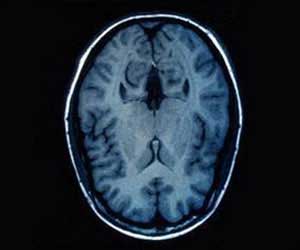Comprehensive genomic analysis of low-grade brain tumors sorts them into three categories, one of which has the molecular hallmarks and shortened survival of glioblastoms multiforms

"Classifying lower grade tumors in these three molecular clusters more accurately characterizes them than current methods used to group and grade tumors," Verhaak said.
The pivotal molecular markers that define the three tumor clusters – mutational status of the IDH1 and IDH2 genes and loss of chromosome arms 1p and 19q -- are already routinely checked in clinical care, Verhaak noted, so implementing the new categories can be done relatively quickly.
Verhaak and colleagues analyzed data from The Cancer Genome Atlas (TCGA) brain tumor studies.
Lack of IDH1/2 mutations drastically reduces survival
Brain tumors arise in the glia, or supportive cells, of the brain and now are classified by their histology – characteristics visible via microscopy – and their cell of origin, either astrocytes or oligodendrocytes.
Advertisement
Glioblastomas make up 55-60 percent of gliomas, with lower-grade astrocytomas comprising 15-20 percent of cases, oligodendrocytes 12-20 percent and combination oligo-astrocytomas at 5-10 percent.
Advertisement
"The results overwhelmingly point to a natural grouping of lower-grade gliomas into three super clusters based on the mutational status of the IDH1 and IDH2 genes and co-deletion of chromosome arms 1p and 19q," Verhaak said.
Previous TCGA research had shown that glioblastoma patients with mutations of IDH1/IDH2 in their tumors have an improved prognosis. Verhaak said whether these mutations are markers of good prognosis or actually have a role in thwarting tumor progression is not known. Co-deletion of 1p19q has been associated with increased tumor sensitivity to chemotherapy and longer survival for oligodendroglioma patients.
Each molecular group includes tumors from all grades and categories of astrocytoma, oligodendrocytoma and oligo-astrocytoma
The three molecular super clusters of lower grade gliomas have either:
- Wild-type IDHI1 and IDH2 with no mutations. These tumors are similar to glioblastoma, with patients' median survival at 18 months.
- IDH1/IDH2 mutations and chromosome arms 1p/19q intact. No dominant histology or grade type, median survival of about seven years.
- IDH1/IDH2 mutations and co-deletion of 1p/19q. This cluster was composed mainly of oligodendrogliomas (84 percent) and had median survival of about eight years.
Source-Eurekalert













